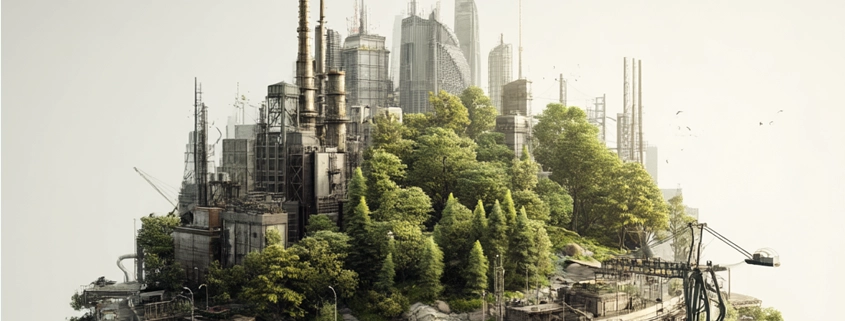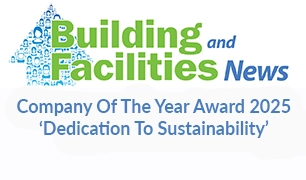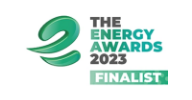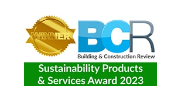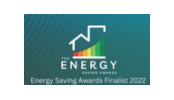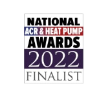In the pursuit of net zero commercial building stock in the UK, achieving carbon negative water heating is the ultimate goal, but is it even possible today? The pursuit of net-zero carbon buildings necessitates a critical look at every aspect of their energy consumption. While often overlooked, hot water systems can contribute significantly to a commercial building’s carbon footprint, being responsible for as much as 30% of its daily energy demands. To address this challenge requires an examination of technologies, strategies, and considerations involved if this ambitious goal is to be achieved.
So, what do we mean by a carbon negative water heating?
A carbon negative water heating system not only reduces carbon emissions but also actively removes more carbon dioxide from the atmosphere than it emits during its entire lifecycle. This encompasses three forms of carbon – embodied, operational and sequestered. Embodied carbon includes carbon emissions associated with the extraction, processing, transportation, and construction of the system components. Operational carbon refers to emissions resulting from the energy consumption of the system throughout its operational life. Carbon sequestration deals with the potential of the system to contribute to the removal of carbon dioxide from the atmosphere and be stored in either solid or liquid form.
Sequestration can be achieved by managing or enhancing natural processes, such as reforestation to absorb carbon dioxide (CO₂) through photosynthesis; adding iron or other nutrients to the ocean or simulating natural upwelling processes to bring nutrient-rich water to the surface to stimulate the growth of phytoplankton, which absorb CO₂; or reacting CO₂ with minerals to form solid carbonate compounds. Technology-driven artificial processes are also likely to play an increasing role in the removal of carbon, including carbon capture and storage (CCS), direct air capture (DAC), and enhanced weathering.
CCS involves capturing CO₂ emissions from industrial sources or power plants, transporting it, and storing it permanently underground in geological formations. DAC technologies directly extract CO₂ from the atmosphere using specialised plant. Enhanced weathering involves accelerating the natural process of rock weathering to absorb CO₂. Burning fossil fuels in oxygen instead of air (chemical looping) and capturing the resulting CO₂ also offers a means for carbon sequestration.
In terms of domestic hot water (DHW) provision across the commercial built estate, national projects are more likely to drive uptake of carbon sequestration on a meaningful scale, but service provision exists for organisations willing to invest, and if cost-effective, should form a key part of any corporate sustainability strategy. Most organisations will initially concentrate on better managing embodied and operational carbon since technology already exists to help achieve strategic goals today.
Material selection and construction lie at the heart of efforts to better manage embodied carbon. Manufacturers are beginning to prioritise the use of low-embodied carbon materials in the construction of the hot water system, such as recycled or bio-based materials. The use of recycled steel is a particular goal given the amount required for often very large commercial vessels. In a similar style to carbon passports – rather than individuals being assigned a yearly carbon allowance for travel, to limit greenhouse gas emissions and encourage sustainable travel habits – products could be tagged to indicate the embodied carbon, declaring levels of recycled materials, enabling value to be calculated not only at purchase/installation but critically at end-of-service.
Utilising prefabricated and modular construction techniques can reduce waste, improve efficiency, and minimise on-site construction activities, thereby reducing embodied carbon. Adveco is a proponent of the offsite construction technique for DHW plant rooms, which is predominantly deployed in partnership with customers aggressively seeking to drive sustainable buildings across their portfolio. There are tremendous advantages in terms of cost, quality and speed of roll-out that would best serve the interests of most customers. Adveco has also proposed the benefits of a modular approach to commercial DHW applications, with a particular focus on the implementation of heat pumps.
Managing operational carbon is, no doubt, the greatest challenge for sustainability strategies, which must address the often high daily energy demands of DHW. This is exacerbated by the longevity of DWH systems and the gradual degradation of their efficiency. It is not uncommon for water heaters to more than exceed the expected 12 to 15-year operational window. Regular service and maintenance will greatly extend the life of an appliance up to two decades, but on occasion, far longer with systems still in use 30-40 years after initial installation. On paper, that sounds like a fantastic return on investment, certainly in terms of capital spending. However, there will be a considerable impact on operational efficiency from ageing parts, corrosive damage, or limescale build-up, but particularly the lack of technical advance that has characterised product development across the past decade. Everything from advances in burners, better conductive and stronger materials, functional design and energy recovery to smart controls and onboard metering and management have made the latest generation of water heating appliances, whether they be gas-fired or electrically powered, far more advanced and more efficient. This means they inherently require less energy to achieve the same or better results for greater operational carbon reduction as well as cutting running costs.
Adveco is a particular proponent of renewable energy integration through the design of hybrid systems that optimise how technologies are used to heat water, maximising energy in versus hot water out. For many, this is a key strategic goal, and there are pre-eminent technologies that can enable real gains, even for the smallest, most low-impact projects.
One of the most valuable technologies available to commercial organisations seeking to cut operational carbon is solar thermal. Harnessing solar energy to heat water directly offers a proven and readily available answer to decarbonising hot water systems. Integrating high-efficiency solar thermal collectors with the latest generation of cylinder and controls can significantly reduce reliance on grid energy. The capability to integrate a smaller number of high-efficiency collectors in a wide variety of configurations on building roofs and facades, along with silent operation, makes the technology especially applicable for commercial projects aiming to maximise external spaces for on-site energy production.
The other core technology available right now is the heat pump. Both geothermal and air source pumps have a role to play in delivering carbon negative water heating. Utilising the stable temperature of the ground to extract heat, geothermal heat pumps can offer a reliable and efficient option but are limited by the suitability of ground conditions and the initial cost of ground works. For large-scale and more industrial projects, these can be a good option, but small to mid-scale commercial sites may struggle with the limitations, meaning air source heat pumps (ASHPs) remain the more viable choice. Not necessarily the most cost-effective means of heating water, especially for commercial-scale projects, heat pumps will actively reduce carbon emissions, so they are an important tool for achieving negative carbon operation. Heat pumps lose out to solar thermal due to the need for electrical input to drive the compression of refrigerant necessary to create heat. As efficiency drops, energy demand to drive the process will increase, and so long as the grid electrical supply uses gas-fired power stations, it cannot be regarded as a true renewable. That said, the technology can be a meaningful contributor over time as the grid becomes increasingly greener.
Looking forward, a green grid will see a balance of energy inputs, increasing renewable feeds from solar and off- and onshore wind. There remain high hopes for natural gas to be replaced by green alternatives, in particular hydrogen, maximising the existing gas network and in turn minimising impact on commercial operations with legacy gas-grid connections. One of the key questions remains how to safely decarbonise electricity generation. Coal-fired power stations are finally a thing of the past, but gas is still burned, and there continue to be fears over nuclear generation. One particular technology which is gaining considerable attention, though, is thorium-based nuclear power. Naturally occurring and abundant in the earth’s crust, the slightly radioactive metal is nearly three times more abundant than uranium and can be used in many types of reactors. A key advantage of Thorium nuclear power reactors is that they will produce less amounts of waste compared to other nuclear fuels, avoiding large storage facilities, high radiation levels and resultant high temperatures. The radioactivity levels of thorium waste are found to fall in a much shorter period than nuclear waste produced by other fuels.
Perceived as a low-cost, safe and sustainable energy, the technology is progressing swiftly. In the UK, there are currently five operating thorium reactors and three de-fuelling reactor sites. With proposals in place for further plants to be built in the next few decades, the technology offers the potential to meet electricity demands, which can service both the commercial and residential built estate with more cost-effective and environmentally friendly grid electricity. For water heating, this would drive focus on 100% efficient electric boilers and decrease the demand for heat pumps in favour of technology able to offset energy demands, such as wind and solar.
Long term, there remain several question marks over next-generation grid power, both in terms of technical advancement and investment at a national level. In the shorter term, there is still much that can be done to influence the evolution of water heating systems towards a carbon negative model.
A major function of energy management revolves around its storage and deployment. Working better with the grid is certainly going to be a part of the solution for larger-scale projects, where integrating hot water systems with smart grids for demand-side management allows for dynamic control of energy consumption, optimising usage during periods of low demand and maximising the utilisation of renewable energy sources. But one of the basic tenets of well-designed water heating is the optimal utilisation of thermal energy storage in the form of cylinders or tanks. These vessels are deployed in water heating the same way batteries are used in an electricity-based system, storing and deploying energy – in this case heat – as and when required. The predominant use is to manage heat from renewable sources generated as system pre-heat and any hot water returning from the system to provide balanced resources able to meet all the daily and peak demand periods. The better the storage is designed and managed, the better the overall system efficiency, resulting in reduced demand for grid energy.
An efficient system will avoid waste wherever possible, so capturing and utilising waste heat will be an important function of a water heating system, and this can be improved by using waste heat from other building systems, such as chillers or ventilation systems. Integrating heat pumps with waste heat recovery systems can further enhance efficiency and reduce reliance on primary energy sources, or future options involve the use of outside sources in the form of local heat networks, all of which can be directed to supply additional preheat for the generation of domestic hot water.
Undoubtedly, there is a need to drive buildings toward ‘carbon negative’ water heating. It is achievable, but numerous challenges lie ahead of the industry. Higher initial investment compared to traditional systems still goes without saying, from a macro national scale down to each and every building. Those costs come from rolling out new technology and better integrating renewable energy sources with the grid. The technical complexity of integrating multiple technologies and then optimising those elements and a national scale is immense, and to so extent will be mirrored in each building to maximise performance. At this local scale, we also see ongoing issues from space constraints – especially in highly built-up areas – where incorporating some renewable energy technologies may require significant space or be constrained by existing infrastructure, whether above or below ground.
Building carbon negative hot water systems is a challenging but achievable goal. By embracing a multi-faceted approach that integrates renewable energy sources, waste heat recovery, and smart grid technologies while minimising embodied carbon, we can create hot water systems that not only reduce emissions but also actively contribute to carbon sequestration. Continued research and development, along with supportive policies and incentives, will be crucial to accelerating the adoption of these innovative technologies and paving the way for a truly sustainable built environment by the 2050 target for net zero emissions.

